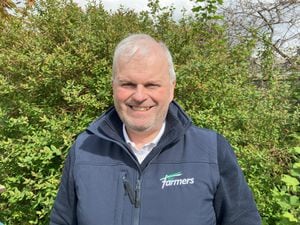Shropshire Farming Talk: Summer solutions
Seasonality and genetics are big factors which influence milk constituents; selection within a breed can also offer significant effect, however there are some key dietary points which we must also take into account.

Fibre and rumen health are key for milk yield and milk fat, glucogenic nutrients are important for protein production. The impact of pasture can cause a butterfat drop due to lower structural fibre and high fat found particularly in early grass.
Diets low in fibre and high in polyunsaturated fatty acids (PUFAs) are considered the main culprits to reducing butterfat: Low fibre intakes alter the environment in the rumen reducing the bugs ability to completely convert/saturate these PUFAs. Unsaturated fats are taken to the udder and inhibits butterfat production. The lack of fibre may also lead to rumen acidosis or at least a lower rumen pH.
Heat stress occurs when the heat load is greater than the cows capacity to lose heat. Once a cow fails to control thermal balance, she becomes stressed and the energy for production will be re-directed to thermal regulation. Milk yields can fall as much as 20% during heat stress and the effects are not limited to just yield and milk constituents, it can also negatively impact fertility through embryonic loss and an increase risk of mastitis.
The rumen pH is also affected in two ways: 1) Dry matter intake decreases reducing the amount of saliva production and 2) Heat stress stimulates slobbering which reduces the amount of saliva reaching the rumen. Emerging evidence suggest that calves from prepartum heat-stressed cows have compromised passive immunity and impaired immune function.
To help reduce the impact and risk of heat stress, sufficient water with adequate trough space should be supplied with easy access.
To maintain optimal rumen function, adding supplements such as a buffer or yeast can help. Increase energy density of feed, to compensate for lower intakes and ensuring feed is palatable to encourage intakes. Shade and cooling systems: sprinklers and fans are effective when cows are exposed with heat stress and herd management are key to reducing outbreaks. Stocking rates and ventilation are often forgotten about.
High risk animals; transition or sick cows are typically more affected due to their immune response. Encouraging water and feed intakes are critical. Buffers and yeasts can also help transition cows during this period.
Forage stocks are looking plentiful this year. But please ensure a forage sample is taken and analysed. This will enable the forage to balanced correctly. Early indications are that both energy and protein are lower in grass silage this year along with an increase in fibre and lignin. By understanding forage quality, the diet can be balanced correctly with fermentable carbohydrates and proteins to increase fibre digestion. A balanced diet optimizes performance, reduces waste and helps to improve the farms carbon footprint.
Paul Mardell, NWF Technical Development Manager





